Treeworks is the industry-leading arboricultural consultants providing high quality services to clients throughout the UK. While we specialise in assisting clients to manage large tree populations, we work on all scales of projects and enable clients to...
Don't wanna be here? Send us removal request.
Text
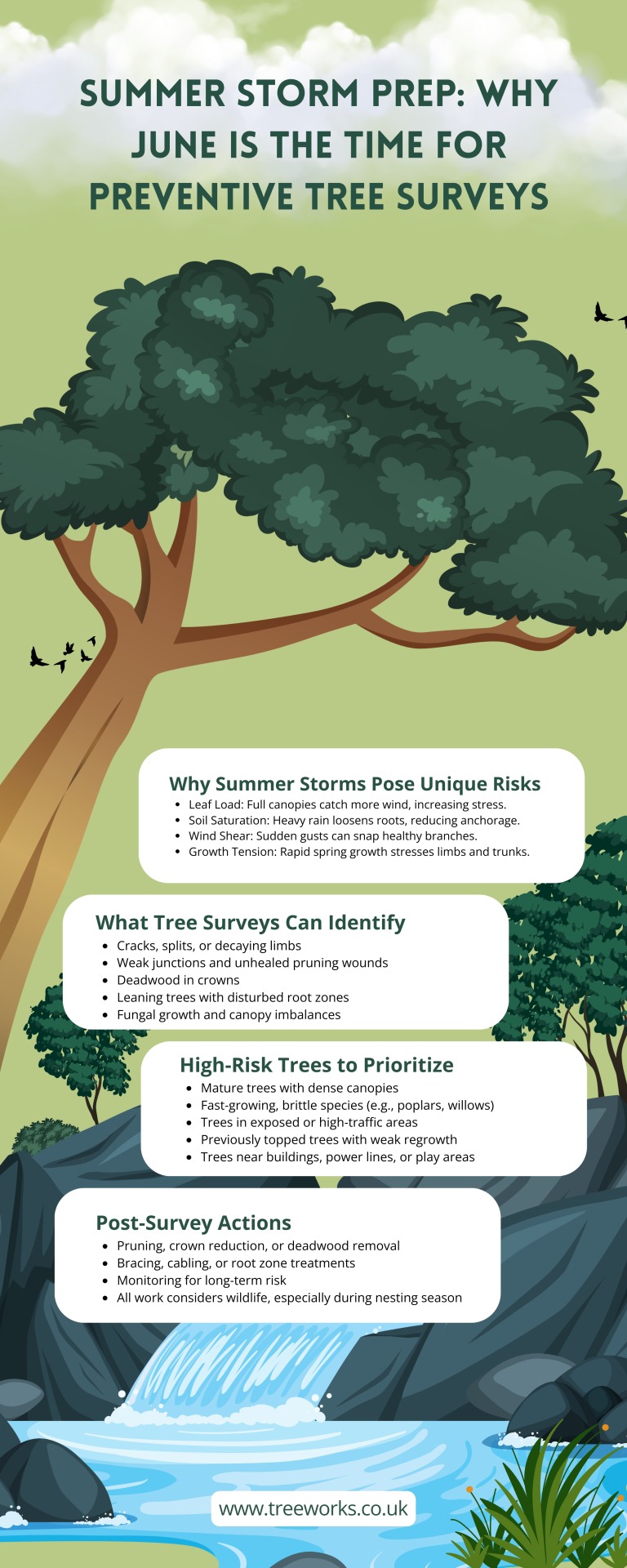
Summer Storm Prep: Why June Is the Time for Preventive Tree Surveys
0 notes
Text
Preventive tree surveys aren’t just about avoiding worst-case scenarios. They’re about good planning. Trees add character, value, and shade to your property, but they also carry responsibility. Knowing they’ve been checked by a professional brings peace of mind, especially when the skies start to turn. By catching problems early, you protect not only your trees but also the people, buildings, and landscapes around them. June is the right time to do it, before the storms arrive, and while you still have choices.
0 notes
Text
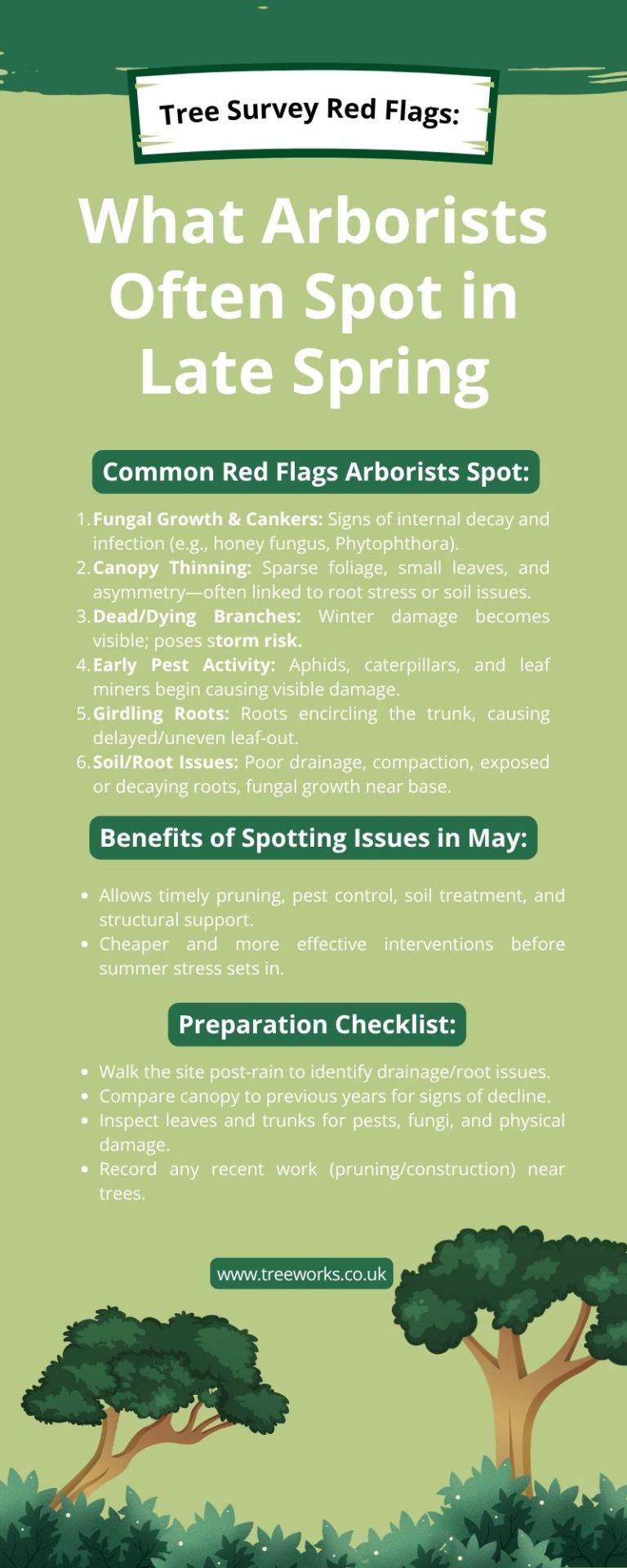
Tree Survey Red Flags: What Arborists Often Spot in Late Spring
0 notes
Text
Arborists conducting tree surveys in May often notice patterns. Certain issues become more visible during this time—some subtle, some more obvious—and knowing what to look for makes all the difference. Understanding these warning signs can help property owners prevent decline, avoid safety risks, and keep tree care costs manageable in the months ahead. That’s why Treework Environmental Practice encourages property owners, local authorities, and developers to schedule routine inspections during this period.
0 notes
Text

How Tree Surveys Support Pollinator Habitats in Spring
0 notes
Text
Spring is when nature really wakes up. Bees start buzzing, butterflies begin fluttering, and trees quietly get on with producing the blossoms that make it all possible. While most people think of flower beds and wildflower meadows when it comes to pollinators, trees are one of the earliest and most important sources of food and shelter for these creatures. And that’s where professional tree surveys come in.
0 notes
Text
Preparing Trees for Outdoor Events: The Role of Arboriculture in Public Safety
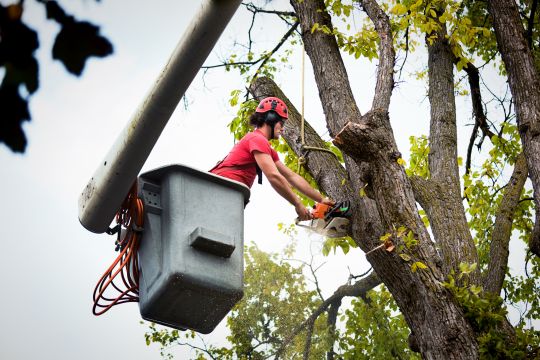
As spring settles in and warmer weather returns, gardens, parks, and green spaces across the UK begin to fill with life not just wildlife but also people. This is the season for open-air events, from music festivals and food fairs to school fêtes and outdoor weddings. And with that comes a familiar scene: visitors gathering under trees for shade, picnics, or a quiet moment in the fresh air.
However, trees, as much as they add beauty and character to these spaces, also come with responsibilities. A large limb above a footpath, a hidden crack in old oak, or compacted soil around roots can all pose risks when crowds gather. For councils and event organisers, checking the condition of trees before a big event isn’t just good practice it’s essential.
This is where arboriculture plays its part. Tree surveys and risk assessments help ensure that every branch and trunk in a public space supports the event safely rather than becoming a hazard.
Why Tree Safety Deserves Attention at Public Events
Trees are central to the atmosphere of an event, but they’re also living structures that can change over time. What looked fine a year ago may now be harbouring signs of stress or decay. High winds, harsh winters, or even foot traffic from past events can take their toll.
In crowded areas, the stakes are higher. A falling limb or unstable tree doesn’t just damage property, it can cause injury or worse. While serious incidents are rare, they happen, and the legal and reputational consequences for organisers can be severe.
Whether it's a family fun day or a multi-day festival, any area where people will gather, beneath trees or nearby, needs to be considered. That includes walkways, seating zones, vendor stalls, entrances, and structures set up anywhere. A proactive survey shows you've taken steps to manage risk and demonstrates a clear duty of care.
What’s Involved in a Tree Risk Assessment?
Ahead of any major event, a qualified arborist can carry out a thorough inspection of trees across the site. These surveys look at overall condition, structural stability, and any signs that a tree might pose a risk during the event.
Arborists assess things like:
• Cracks or splits into branches and trunks • Signs of disease or decay: fungal growth, dieback, hollowing • Soil conditions that affect root stability, like waterlogging or compaction • Tree location in relation to stages, paths, car parks, or temporary installations • Recent weather impacts especially after storms or heavy snow
Notably, the survey isn’t just about ticking boxes. Arborists tailor their assessment to the type of event and the way the space will be used. A quiet yoga session under trees has a different risk profile to a high-traffic food market.
How Arborists Help Event Planners Stay One Step Ahead
Councils and event organisers often work closely with arboricultural consultants, especially when managing larger sites with mixed tree species and varying ages. The value of professional advice can’t be overstated especially when it comes to balancing safety with preserving mature, characterful trees.
Here’s how arborists typically support event prep:
• Inspecting trees for health and safety concerns • Mapping and reporting on tree locations and conditions • Recommending actions like deadwood removal, crown lifting, or protective fencing • Advising where not to place stages, tents, or temporary infrastructure to avoid damaging roots • Assisting with planning applications or tree preservation issues in protected areas
This level of support gives organisers clear information and helps them plan confidently. It also satisfies insurers and local authorities that due diligence has been carried out.
Trees Near Seating and High-Use Areas: What to Watch For
Special care should be taken with trees near high-traffic spots—picnic areas, food vendors, entrances, or anywhere people might gather or queue. These areas often experience extra pressure, from heavy footfall to temporary structures being installed nearby.
Even minor tree issues can escalate here. A weak branch might not be a concern in normal conditions, but under the stress of new foliage or a sudden wind gust, it could break. Roots might become compacted beneath marquees or trampled paths, reducing oxygen flow and impacting long-term stability.
That’s why arborists look beyond what’s visible, they assess how the trees will interact with the event space and its temporary changes. Often, straightforward solutions like repositioning a tent or fencing off part of a root zone can make all the difference.
Spring: The Best Time to Check In on Tree Safety
Spring is ideal for tree risk assessments. Trees are just beginning to leaf out, allowing arborists to assess both early canopy development and structural visibility simultaneously. It’s also the point when any lingering damage from winter, cracked limbs, frost splits, or dieback becomes more apparent.
Planning events for late spring or summer? Then April and early May are perfect for carrying out assessments. This allows enough time to schedule any work that’s needed before things get busy and avoids last-minute disruptions that could throw a whole event off track.
Balancing Public Safety with Tree Conservation
A tree survey isn’t a green light to start removing trees. In fact, in most cases, the goal is to retain trees and manage them wisely. Rather than overreacting, it’s about spotting potential hazards early and taking measured steps such as pruning or setting up protective zones.
Qualified arborists work within accepted risk frameworks to determine what’s safe and what might need attention. Often, it’s not about removing trees at all, but simply keeping a closer eye on them. Regular monitoring means minor issues can be managed before they grow into real problems.
With a few sensible adjustments, even trees with small defects can stay right where they are safely adding shade, charm, and a sense of place to any event.
Why It All Adds Up to Better Events
Outdoor events are more than what’s on the stage or in the stalls. People remember how a space made them feel whether it was shaded and inviting or crowded and uncomfortable. Healthy trees add so much to the atmosphere of public events, but only if they’re safe.
Tree surveys offer peace of mind. They help organisers confidently plan, reduce risk, and show visitors that the space has been thoughtfully managed. And beyond the event itself, they support the longer-term health of the green spaces we all depend on.
When trees are treated as living assets not just background features everyone benefits. And that starts with a timely, professional inspection before the crowds arrive.
FAQs
Do I need a tree survey for every event?
Not necessarily. It may still be valid if you’ve had a survey recently and nothing significant has changed. However, an updated check is a wise move after major weather or if the event layout has shifted.
What happens if a tree is found to be unsafe?
The arborist will recommend action based on the risk. This might include pruning, fencing, or, in rare cases, removal. The goal is always to manage the issue while keeping as much of the tree in place as safely as possible.
Can temporary structures harm trees?
Yes. Tents, stages, or heavy foot traffic can compact the soil around roots, limiting oxygen and water flow. Arborists can advise on where to place these structures to avoid long-term damage.
© Treework Environmental Practice
0 notes
Text
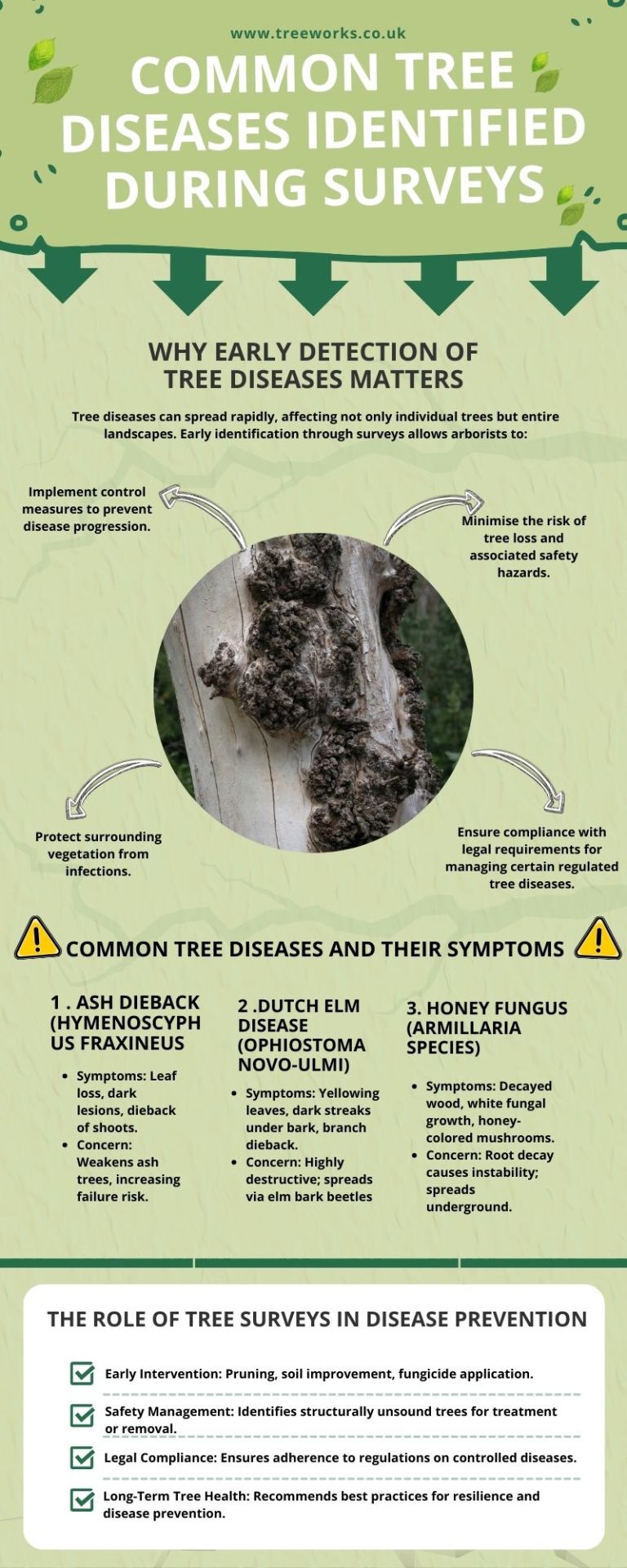
Common Tree Diseases Identified During Surveys
0 notes
Text
Professional Tree Surveys
Trees are a key consideration in property development, whether for residential, commercial, or infrastructure projects. Local authorities require professional tree surveys to assess the impact of construction on existing trees and ensure legal compliance with preservation regulations. Developers who integrate tree management into their planning process benefit from a smoother approval process, reduced legal risks, and enhanced site sustainability.
0 notes
Text

Choosing the right arborist is crucial for a reliable tree survey. Find out how to select a certified arborist who offers accurate inspections, risk assessments, and expert tree care advice.
1 note
·
View note
Text
Professional Tree Surveys
Having your trees surveyed is crucial for safety, legal compliance, or development purposes. Choosing the right expert for Professional Tree Surveys ensures that the assessment is thorough, accurate, and compliant with regulations. With many specialists offering tree-related services, knowing what to look for can help you select a qualified professional who meets your specific needs.
1 note
·
View note
Text
Arboricultural Consultants
The field of arboriculture continues to evolve with advancements in technology and a growing emphasis on sustainability. As trees play a crucial role in maintaining environmental balance, arboricultural consultants have embraced innovative approaches to ensure long-term health and effective management of trees.
#arboricultural consultants#arboricultural consultancy services#arboricultural consultancy in london
0 notes
Text
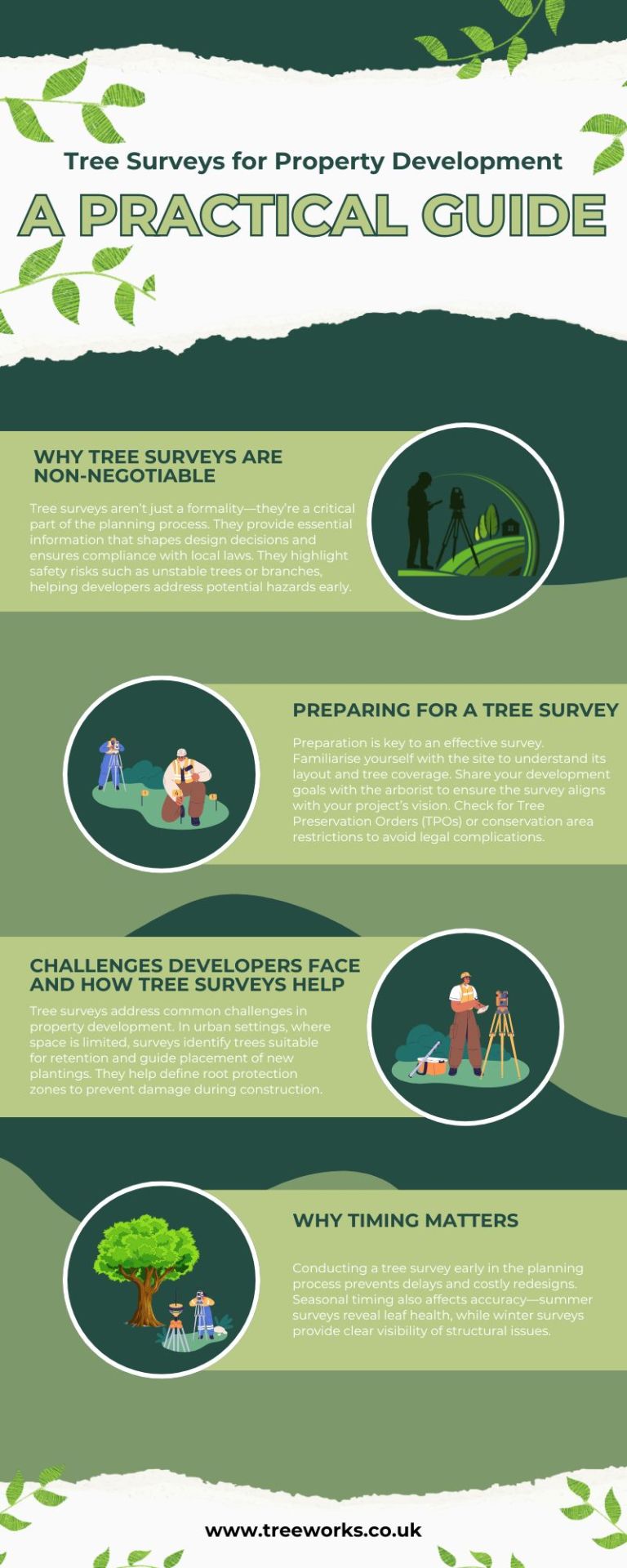
Tree Surveys for Property Development: A Practical Guide
0 notes
Text
Trees are a defining feature when planning a property development. Whether they enhance a site’s natural beauty or present challenges during construction, professional tree surveys are vital for understanding their condition. A detailed tree survey ensures informed decisions, balancing development goals with environmental responsibility.
0 notes
Text
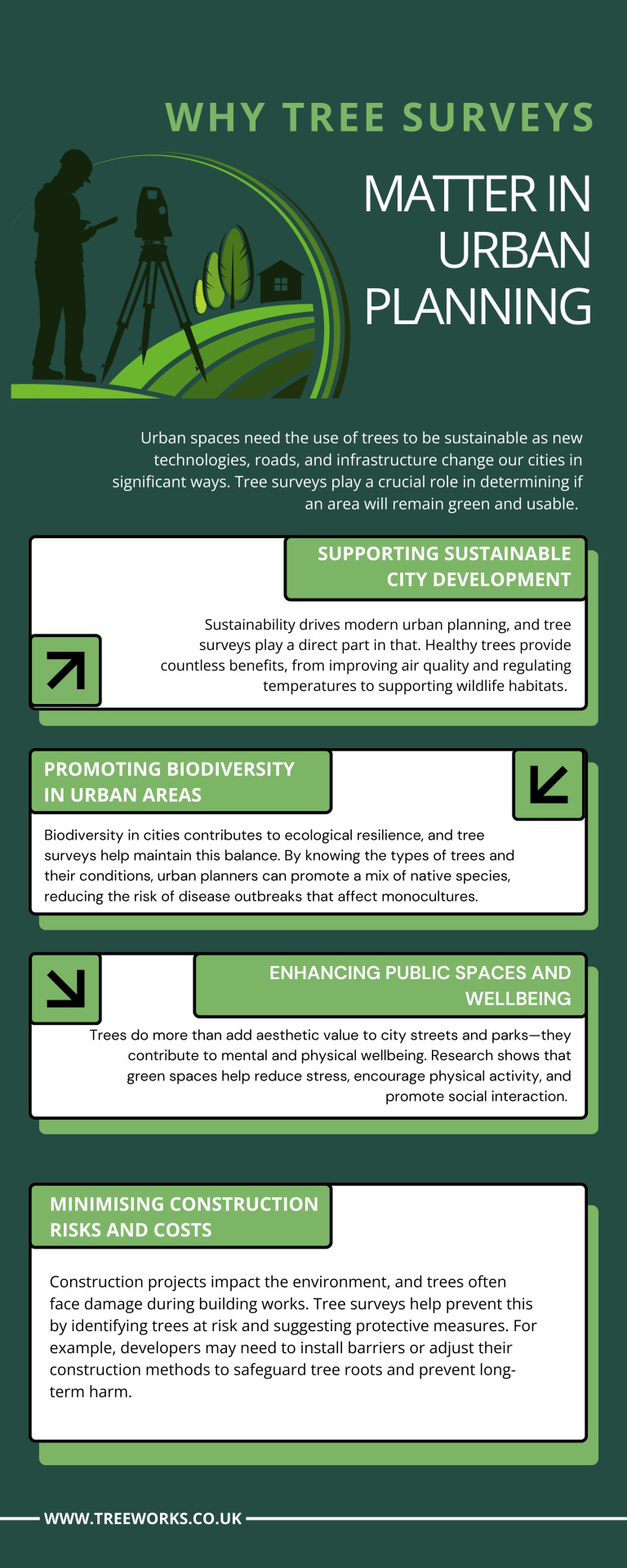
Why Tree Surveys Matter in Urban Planning
0 notes
Text
Urban spaces need the use of trees to be sustainable as new technologies, roads, and infrastructure change our cities in significant ways. Tree surveys play a crucial role in determining if an area will remain green and usable. They provide the evidence needed to plan for development.
0 notes
Text
How to Care for Trees During Different Growth Stages

Like other living things, trees go through different growth stages, calling for unique care and maintenance. Whether growing a sapling or tending to a mature tree, this guide will help you understand the best way to care for your trees at each stage of their life.
Get Them Off to a Good Start
It all starts with a tiny seed. The primary focus is to establish roots and begin growth. Here’s what you need to do during their earliest phase:
The location matters. The perfect spot has the correct soil type, gives appropriate sunlight exposure, and provides space for growth.
Know when to water. Young trees need consistent moisture to grow strong roots. Water regularly, but don’t overdo it to avoid soggy soil and root rot. Keep the soil damp but not waterlogged.
They also need protection from pests. Young seedlings can be vulnerable to pests and diseases. Use mulch to protect the base, and watch for signs of trouble, such as wilting leaves or unusual spots.
Support Healthy Development
As the tree grows from a sapling into a young tree, it enters a stage of rapid development. During this phase, the focus should be on encouraging sturdy growth and resilience:
Start light pruning to help the tree develop a strong structure. Remove any small branches that cross over or grow inward to prevent future problems. Keep the cuts clean and avoid over-pruning.
Feed the soil with a slow-release fertiliser. This provides the tree with essential nutrients to promote strong branches and lush foliage.
Young trees need water but also require time to dry slightly to encourage deeper root growth. Water deeply but less frequently to help roots grow deeper into the ground.
Care for Established Trees
Once a tree matures, it becomes more independent but still needs attention to keep it healthy. Here’s what you should focus on for mature tree care:
Check regularly for signs of disease, damage, or pest infestation are important. Watch for any changes in the bark, leaves, or branches that could indicate a problem.
Mature trees usually don’t need as much watering as younger ones, but in periods of drought, deep watering can be beneficial. Water around the base so the moisture reaches the roots deep underground.
Apply a fresh layer of mulch around the tree base to help retain moisture and regulate soil temperature. Leave a small gap around the trunk to prevent rot.
The roots of mature trees spread far and wide. Avoid parking vehicles or placing heavy objects near the tree base, as compacted soil can limit root growth and affect the tree’s health.
Care for Ageing Giants
Older trees are majestic, but they need a bit more attention to stay healthy. Ageing trees may show signs of decline if not properly looked after:
Check for dead or dying limbs and remove them as needed to prevent accidents. An arborist can help with larger branches or a tree that requires more intensive care.
Keep an eye out for signs such as mushroom growth on the trunk or branches, unusual bark peeling, or discoloured patches.
Avoid heavy pruning. Older trees can be less tolerant to significant cuts. Remove only what’s necessary, such as dead or damaged branches.
Seasonal Care Tips for Every Stage
Trees need different types of care depending on the season. Here are a few seasonal tips to keep your trees thriving:
Spring: Inspect for winter damage and trim small, broken branches. Check for early signs of pests and diseases.
Summer: Maintain watering, especially for younger trees, and keep an eye out for signs of heat stress. Protect the tree base with mulch.
Autumn: Rake leaves and keep the area clean to prevent fungal growth. Prepare for winter. The soil must have enough moisture before the cold sets in.
Winter: Keep an eye on the weight of snow on branches. If branches are bending under the weight, gently knock off the snow to avoid damage.
Keep Your Trees Strong Through All Stages
Understand the lifecycle of trees and the care they need at each stage for their long-term health and beauty. Regular attention, proper watering, and knowing when to call in an arborist will help you enjoy your trees for years to come.
Got your own tree care tips or stories? Share them in the comments below! If you found this guide helpful, give it a like and share it with others who love their gardens.
Frequently Asked Questions
How can I tell if my tree is healthy?
Look for signs like vibrant leaves, strong branches, and solid bark. Changes in colour, wilting, or dead branches can indicate a problem.
When is the best time to plant a tree?
In the UK, autumn is an ideal time to plant most trees. The soil is still warm, which helps roots establish before the colder months set in.
Can mature trees be moved?
Yes, but it’s a complex process best left to professionals. Transplanting mature trees requires special equipment and techniques to ensure the tree survives the move.
© Treework Environmental Practice
0 notes